Cannabis used to enhance your hiking experience is an excellent way to get the most out of being outdoors. Colorado is full of areas to escape into nature to feel its therapeutic benefits, including the infamous Rocky Mountain National park which is home to over two hundred of the best backpacking trails in Colorado.
Colorado’s scenic hikes include the following and many more:
- Dream Lake
- Sky Pond
- Nymph Lake
- Mills Lake
- Hanging Lake
- Glenwood Springs
- Grays Peak
- South Mineral Campground
- Blue Lakes
- Maroon Bells Wilderness, Four Pass Loop, and Maroon Lake
- Crystal Clear Alpine Lakes and Alpine Meadows
- Mirror Lake
- Indian Peaks
- Sawtooth Ridge
- Torreys Peak
- Great Sand Dunes
- Lake Granby
There’s a certain magic about climbing to the peaks, hiking along rivers and waterfalls, and picnicking among the wildflower fields that genuinely deepen the connection between humans and the earth.
Can you hike while smoking weed?
Yes. If you are an adult over 21, you can legally possess one ounce of marijuana flower or THC-infused products. However, it’s important to remember that weed is illegal to possess and consume on federal land, including national parks.
We recommend getting to know your local laws and being discreet when using cannabis because it is still federally illegal.
Is Sativa or Indica better for hiking?
When hiking, you’ll want to maintain energy while staying safe and relatively in control of your body. Because of this, Sativas are the ideal strain to balance out outdoor adventurers.
While many hybrids would also be fine, we advise steering clear of potent Indica strains because they can provide too intense a body or cerebral high. Also, remember to pack plenty of water when hiking due to the dehydrating effects of weed and elevation gain.
Best Cannabis strains for Hiking High
5 Best Cannabis Camping Accessories
- RAW Hemp Rolling Papers and Roller
- Tetra’s Wind-proof Lighter
- LokSak storage bags
- Stashlogix Hemp Doob Tube
- Evergreen Organix THC-Infused Sunscreen
Click here to find local dispensaries with these and more useful products for your backpacking trips.
What is high elevation hiking?
High elevation hiking (high altitude hiking) is from approximately 8,000 to 13,000 feet. Colorado offers even higher hiking limits up to 18,000 in some areas of the Rocky Mountain National Park.
If you’re looking to expand your hiking adventures, you may be considering moving on to taller peaks. Colorado has thousands of mountains that people regularly summit, but you’ll want to understand the potential risks with higher altitudes before putting on those hiking boots.
Here are some tips to be prepared for when higher altitude hiking:
Slow Your Pace
As elevation is gained, slowing your pace will keep your body working without overexerting and causing an oxygen deficit.
Maintain a Rhythm
Keeping a steady breath-to-step rhythm is critical at higher elevations. Pay attention to your breath often.
Breathe Deep
When you first notice any breathlessness, start breathing deeper immediately. Take deeper breaths and smaller steps until you have a sustainable pace again. Linking your breath to your walking pace can help maintain that pace especially after trekking past a false summit.
Apply Sunscreen Often
This step is critical because the sun is more powerful at higher elevations. Snow, light-colored rocks, cooler temperatures, and little shade above the treeline also contribute to sunburns.
Bring Sunglasses
Sunglasses can prevent squinting and headaches, snowblindness, and sunburned eyes or eyelids. Using side guards can offer extra protection.
Pack Extra Clothing
You’ll want to pack long sleeves and pants, hats, and gloves to protect you from prolonged exposure to the sun, wind, or cold weather. Mountain weather can change fast, causing temperatures to drop over thirty degrees in less than one hour in certain instances.
Where is the highest hike in the world?
Mount Everest in China. The Everest Base Camp Trek is a challenging hike even for experienced hikers that passes four of the world’s six tallest peaks along the way.
Everest (8,848 meters, 29,028 feet)
Lhotse (8,516 meters, 27,939 feet)
Makalu (8,470 meters, 27,788 feet)
Cho Oyu (8,201 meters, 26,315 feet)
Where is the deadliest hike in America?
Mount Ranier in Washington State. Considered the deadliest hike in the United States, over four hundred deaths have been recorded at Mount Ranier. This mountain has the added risks of an unpredictable volcano, extreme and quickly-changing weather, falling boulders, and avalanches.
Causes of death have included hypothermia, broken bones, drowning, suffocation, and heatstroke, so proceed with caution and be prepared to try this one.
Is weed legal in national parks?
Under federal marijuana laws in the United States, it is illegal to use cannabis in a national park. Even if the land is in a state where recreational marijuana is permitted for adults, this is the case.
The reason for this is that national parks are federally owned. We suggest smoking or taking an edible before your hike if you have plans to visit a national park.
Can you smoke weed at a KOA campground?
The rule of thumb for KOA campgrounds is that use of smokable marijuana is prohibited in cabins. However, tent and RV campers should keep in mind that weed consumption in all forms should remain limited to your personal campsite area.
What’s the most scenic hike in Colorado?
The Alberta Falls Trail is a 1.6-mile out-and-back trail near Estes Park, Colorado, featuring excellent views of a magnificent thirty-foot waterfall. Generally considered an easy route, it takes an average of 45 min to complete the trail and view all of its’ beautiful scenery.
It’s a trendy area for hiking, a horseback trail rider, and snowshoeing, so you’ll likely encounter other people while exploring. The best times of the year to visit this popular trail in Rocky Mountain National Park are from May through October.
Which Colorado city provides the best hiking trails?
Colorado Springs has many fantastic hiking trails, including Red Rock Canyon, Pikes Peak, Cheyenne Mountain State Park, and the surrounding landscape of wildflower meadows.
Whether you’re out for day hikes with the family or want to attempt an intense or moderate hike up a mountain, there’s a great hike in Colorado Springs for everyone’s ability.
420 Friendly Hike and Lodge in Colorado
Bandon Wayside Motel & RV– Oregon
CanyonSide Campground– Colorado
Camp Kush in the 4 Corners– Colorado
Covert-South Haven KOA– Michigan
Can Cannabis Enhance the Experience of Colorado Hiking?
When hiking in Colorado, some people wonder if cannabis can enhance their experience. While it’s a personal choice, some believe that the use of cannabis can heighten their senses and create a unique connection to nature. For those interested, there are captivating cannabis documentaries to see that explore its potential benefits.
Top 10 Best Hikes in Colorado
From all over Colorado, each of these would be a very popular hike that we are sure will be memorable and breathtaking, both from the beauty and elevation changes.
Rocky Mountain National Park Hiking Trails
This gorgeous national park in the rocky mountains is vast and features hundreds of popular Colorado hikes like the Colorado Trail, Rocky Trail, Lone Eagle Peak, and the ones featured below.
1. Emerald Lake Trail
The hike to Emerald Lake begins at the Bear Lake Trailhead. Due to the area’s extreme popularity, you may want to try using the free shuttle during peak season. The Bear Lake Loop splits beyond the trailhead, while the Emerald Lake trail heads toward the left. Most people stop at Bear Lake for the views before proceeding to their final destination.
At approximately 1.8 miles and an elevation of 10,110 feet, hikers will be at Emerald Lake, a gem in the heart of the Rocky Mountains. Off to the right will be the jagged peak of Flattop Mountain, and across the lake, you can hear a rushing waterfall between the two mountains, supplied by meltwater from the Tyndall Glacier.
2. Glacier Gorge Trail
Glacier Gorge trailhead is commonly visited and hosts a vast number of trails ranging in difficulty levels. The attractive aspects include cascading waterfalls, alpine lakes, and stunning granite cliffs.
Glacier Gorge, Bear Lake, and Moraine Valley have been shaped into jagged cliff edges and lakes by receding glaciers during the most recent Ice Age. They supply water to most of the greater Colorado front mountain range.
Glacier Gorge Trail boasts countless out and back hikes offering solitude and serenity for its visitors. There are connecting trails for all-day adventurers to Bear Lake, Glacier Gorge, and Longs Peak.
3. Timberline Falls Trail
The hike to Timberline Falls begins from the Glacier Gorge Trailhead, located on Bear Lake Road, close to eight miles from the highway. Hikers will also have the option of beginning from the Bear Lake Trailhead; however, this detour will add another two-tenths of a mile to your overall roundtrip mileage.
Nearly one-third of a mile and above the trail, you’ll have your first good view of Timberline Falls. From this vantage point, the course begins to climb steep rock steps. At just over four miles from the trailhead, hikers will have reached the base of the beautiful Timberline Falls.
The central portion of the waterfall drops roughly one hundred feet and cascades down the valley below. Look across the valley for a birds-eye view of The Loch in the distance.
4. Bear Lake Trail
Bear Lake Trailhead is the starting point for many of the Rocky Mountains most popular hikes, including the easy half-mile loop around Bear Lake, the 3.6-mile hike roundtrip to Emerald Lake that passes by Nymph and Dream Lakes, as well as the two-mile roundtrip to the mighty Alberta Falls, passing through aspen groves.
This trailhead’s other popular hikes include Bierstadt Lake, Lake Haiyaha, Flattop Mountain, and Fern Lake.
San Juan National Forest Hiking Trails
The San Juan Mountains host an array of trails through jagged peaks and gorgeous lakes and offers some of the best hikes in Colorado.
5. South Colony Lakes Trail
South Colony Basin and its 14,000-foot peaks offer a wide range of recreational opportunities, including camping, hiking, backpacking, mountaineering, fishing, and hunting.
This diversity of activities, combined with the natural beauty of the basin and the rough but passable access provided by the road, has made South Colony Basin the most popular destination in the Sangre de Cristo Range.
Since 1996, the Forest Service has partnered with educational and environmental service organizations to reconstruct trails and climbing routes within the basin, stabilize eroding alpine slopes and restore undesirable campsites and social pathways.
Nearly one million dollars and 40,000 volunteer hours have been spent restoring long-term recreational impacts, rebuilding the lower road, constructing trailhead facilities, and creating sustainable summit trails in South Colony Basin.
6. Ice Lakes Basin
The Ice Lakes Trail offers various options that lead you through a forest, subalpine meadows, alpine tundra, and magnificent views of mountain lakes and rugged 13,000 feet peaks. The trail climbs through two basins to an upper ice lake, each with its unique ecosystem. On the way to the first basin, you’ll pass Clear Creek waterfall and an old mill. After two miles of climbing, the trail goes through the Lower Basin to the lower Ice lake. The path concludes at the amazingly blue, clear Ice Lake.
If you feel like exploring more of the upper Ice Lakes basin area before returning to the trailhead, Island Lake and Fuller Lake are two popular side courses. However, they are trails that the San Juan National Forest does not maintain, so please use caution and travel at your own risk.
Arapaho National Forest Hiking Trails
This National Forest offers visitors a serene getaway through the Colorado woods and around many lakes and rivers along the way.
7. Grizzly Peak and Cupid Peak Trail
Grizzly Peak to Cupid Peak is a 6.7-mile out-and-back trail near Dillon, Colorado. It is typically considered a challenging route that takes an average of four hours to finish. The area is an attraction for birding, hiking, and skiing, is open year-round, beautiful to visit any time of year, and leashed dogs are welcome.
8. Monarch Lake Loop
The Monarch Lake Trailhead resides in the Arapaho National Recreation Area and is a significant access point for the Indian Peaks Wilderness. Facilities include parking for approximately 40 vehicles, restrooms, and a wilderness information cabin.
The Monarch Lake Loop is an ideal family hike that travels four miles through the shady forest, across refreshing creeks, and along the lakeshore. It’s one of the more diverse but manageable hikes in the area and is a popular destination for canoeing and kayaking.
9. Crater Lake Trail
Crater Lake National Park in Oregon was established in 1902 and is a natural wonder created by an explosive volcanic eruption. The park contains thriving forests, diverse wildlife, and an awe-inspiring blue lake called Lake Majesty making it one of the best hikes in Colorado.
It has been hosting visitors for thousands of years as they swim, snowshoe, ski, hike, and cycle through the terrain. With many other activities and landscapes to explore, adventure is endless at Crater Lake.
At almost 2,000 feet deep, Crater Lake is the deepest lake in the United States. It is famous for its water’s gorgeous blue color that comes directly from snow or rain. This typically means no sediment or mineral deposits are carried into the lake, which assists in maintaining its rich color and making it one of the cleanest and clearest lakes in the world. Visitors can swim in designated areas, but the water is usually frigid.
10. Royal Arch Trail- Boulder, CO.
Generally considered a challenging route, the Royal Arch Trail takes approximately two hours to complete. It’s located in a heavily trafficked area for hiking and trail running, so you’ll likely encounter other people and dogs on leashes while exploring. The ideal times to visit this trail are March through October.
The hike to Royal Arch in Boulder, Colorado’s Chautauqua Park, is an intense trek with the end reward of Bluebell canyon and the view of Royal Arch. An essential tip from locals is to go when it’s not so crowded, during the early morning and on weekdays.
The Bottom Line
Cannabis can significantly enhance your connection to nature during an outdoor adventure. Whether you roam across grassy meadows, visit the mountain goats, or trek towards a taller escape like Mount Evans, the best hikes in Colorado have a place for every smoker to enjoy the natural world.
Remember to watch for afternoon thunderstorms, stay prepared and aware of elevation gain, keep cannabis use as discreet as possible, and, most importantly, have fun!

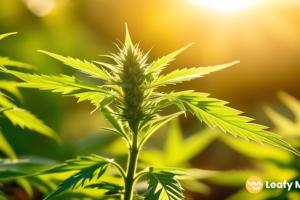
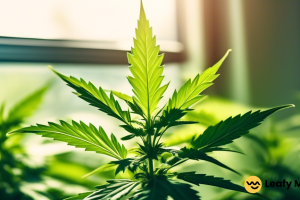





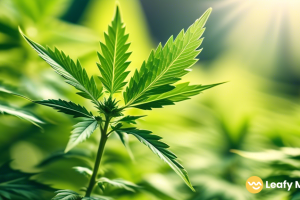
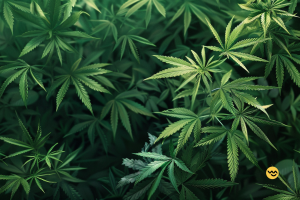
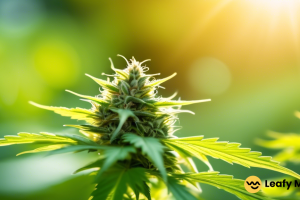
Leave a Reply